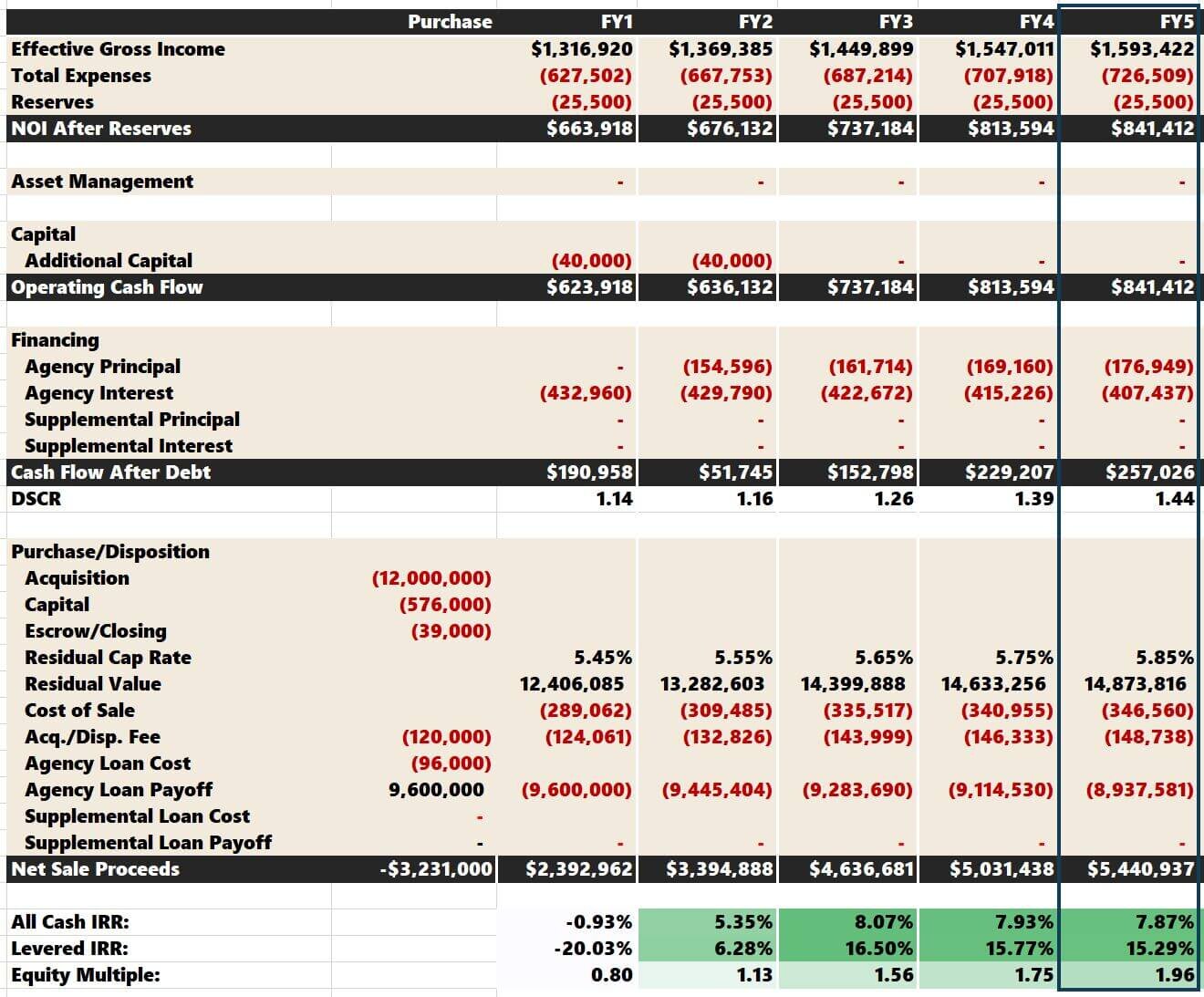

Finance
How Much Is Malpractice Insurance For Nurses?
Published: November 14, 2023
Find out the cost of malpractice insurance for nurses in this comprehensive finance guide. Ensure you're financially protected and get a quote today!
(Many of the links in this article redirect to a specific reviewed product. Your purchase of these products through affiliate links helps to generate commission for LiveWell, at no extra cost. Learn more)
Table of Contents
- Introduction
- Understanding Malpractice Insurance for Nurses
- Factors Affecting the Cost of Malpractice Insurance
- Typical Range of Premiums for Nurses
- Types of Coverage Available for Nurses
- How to Choose the Right Malpractice Insurance Provider
- Steps to Obtain Malpractice Insurance for Nurses
- FAQs about Malpractice Insurance for Nurses
- Conclusion
Introduction
Welcome to the world of nursing, where dedicated professionals provide compassionate care and support to patients. As a nurse, you have chosen a noble and rewarding career path, but one that also comes with its share of challenges and responsibilities. One of these responsibilities is ensuring that you have adequate protection in the form of malpractice insurance.
Malpractice insurance for nurses is a vital component of your professional security. It provides coverage in the event that you are sued by a patient or their family for negligence, errors, or omissions in the care you provide. This insurance not only offers financial protection, but it also provides peace of mind, allowing you to focus on your patients without the constant worry of potential legal claims hanging over your head.
While malpractice insurance is a necessity for all healthcare professionals, the specific requirements and costs may vary depending on your nursing specialty, level of experience, and location.
This article aims to guide you through the basics of malpractice insurance for nurses, helping you understand the factors that influence its cost, the types of coverage available, and the steps to obtain the right insurance policy for your needs. Whether you are a newly licensed nurse or a seasoned practitioner, having a solid understanding of malpractice insurance can empower you to make informed decisions to protect your professional career.
Understanding Malpractice Insurance for Nurses
Malpractice insurance, also known as professional liability insurance, is designed to protect healthcare professionals, including nurses, in the event they are accused of negligence or professional misconduct that results in harm to a patient. It provides coverage for legal defense costs, settlements, and judgments that may arise from malpractice lawsuits.
For nurses, malpractice insurance specifically covers incidents related to professional nursing activities, such as administering medication, providing treatments, or making critical decisions regarding patient care. It protects against allegations of negligence, errors, or omissions that could lead to patient harm.
It is important to note that malpractice insurance only covers claims that fall within the scope of the policy. If a nurse engages in intentional misconduct, criminal acts, or any activity outside the realm of professional nursing, the insurance will not provide coverage.
Malpractice insurance is crucial, as it safeguards your personal assets and financial stability in the event of a malpractice lawsuit. Without insurance, legal costs and potential settlements or judgments could be catastrophic, leading to personal bankruptcy and jeopardizing your professional reputation.
It is also important to understand that malpractice insurance coverage is on a claims-made basis. This means that the policy must be active both at the time the incident occurred and at the time the claim is made. It is advisable to maintain continuous coverage even after retirement or leaving the nursing profession, as claims can be filed years after the alleged incident.
Now that we have a basic understanding of malpractice insurance for nurses, let’s explore the factors that can influence the cost of your insurance premium.
Factors Affecting the Cost of Malpractice Insurance
The cost of malpractice insurance for nurses can vary significantly based on several key factors. Understanding these factors can help you better estimate the premium you may need to pay. Here are some of the main factors that influence the cost of malpractice insurance:
- Specialty: The nursing specialty you practice plays a significant role in determining the cost of your malpractice insurance. Specialties that involve high-risk procedures or have a higher rate of malpractice claims, such as obstetrics, anesthesiology, or intensive care, tend to have higher premiums compared to lower-risk specialties.
- Experience: Insurance companies consider the level of experience when calculating premiums. New nurses with limited experience may be deemed higher risk, leading to higher premiums in their early years. As you gain experience and demonstrate a track record of safe practice, your premiums may decrease.
- Location: The geographic location where you practice can impact the cost of malpractice insurance. Different states have varying laws and regulations that can affect the frequency and severity of malpractice claims. Urban areas with higher population densities may have higher premiums compared to rural areas.
- Coverage Limits: The limits of coverage you choose for your malpractice insurance policy have a direct impact on the cost. Higher coverage limits provide greater protection but come at a higher price. It is essential to strike a balance between adequate coverage and affordability.
- Claims History: Your claims history can have a significant impact on the cost of your insurance. If you have a history of past malpractice claims or settlements, it may lead to higher premiums. Conversely, a clean claims history can help reduce your premiums.
- Policy Deductible: The deductible is the amount you must pay out of pocket before the insurance coverage kicks in. Generally, higher deductibles lead to lower premiums, as you assume more financial responsibility in the event of a claim.
These factors interact and vary across insurance providers, so it’s essential to gather multiple quotes and compare coverage options to find the most suitable and cost-effective malpractice insurance for your nursing career.
Typical Range of Premiums for Nurses
The cost of malpractice insurance premiums for nurses can vary based on several factors as discussed earlier. While the actual premium you may pay will be specific to your circumstances, it is helpful to understand the typical range of premiums that nurses can expect.
On average, malpractice insurance premiums for nurses range from $500 to $2,500 per year. However, it is important to note that these figures are approximate and can vary significantly depending on the factors we discussed earlier, such as specialty, experience, location, and coverage limits.
Nurses who work in high-risk specialties like obstetrics or anesthesiology are likely to have higher premiums compared to nurses in lower-risk specialties. For example, a nurse practicing in a high-risk specialty may see premiums in the range of $2,000 to $5,000 per year.
Experience also plays a role in determining premiums. Newer nurses with limited experience may pay higher premiums initially, which could range from $1,000 to $3,000 per year. As they gain more experience and establish a track record of safe practice, these premiums may decrease over time.
The location where you practice can also influence the cost of malpractice insurance. For instance, nurses in metropolitan areas or states with higher malpractice claim rates may see higher premiums compared to those practicing in rural locations or states with lower claim rates.
When it comes to coverage limits, the level of protection you choose directly impacts the premium. Higher coverage limits mean higher premiums, as the insurance company assumes a greater potential liability. Nurses should carefully consider their specific needs and the potential risks associated with their practice when determining the appropriate coverage limit.
It’s important to gather multiple quotes from different insurance providers to get a better idea of the range of premiums available to you. Comparing options and carefully considering the coverage provided, deductibles, and other policy details will help you make an informed decision.
Remember, these figures are estimates, and your actual premium will depend on your individual circumstances. It’s recommended to consult with insurance professionals who specialize in malpractice insurance for nurses to get personalized quotes based on your unique situation.
Types of Coverage Available for Nurses
When it comes to malpractice insurance for nurses, there are several types of coverage options available. Understanding these options will help you select the right policy for your needs. Here are some of the common types of coverage for nurses:
- Occurrence-based Coverage: Occurrence-based coverage provides protection for any incidents or claims that occur during the policy period, regardless of when the claim is filed. This means that even if a claim is filed years after the alleged incident, as long as the incident occurred during the active policy period, you will still be covered.
- Claims-made Coverage: Claims-made coverage provides protection for claims that are both made and reported during the policy period. This means that for a claim to be covered, it must be filed and reported to the insurance company while the policy is still active. It is important to note that claims-made policies may require the purchase of “tail coverage” or “extended reporting period” coverage to cover any claims made after the policy has expired or been canceled.
- Defense Costs: Defense costs coverage covers the legal expenses incurred in defending a malpractice claim, including attorney fees, court costs, and expert witness fees. This coverage is crucial, as legal defense costs can be exorbitant, even if the claim is ultimately dismissed or settled.
- Consent-to-Settle: Consent-to-settle coverage allows you, as the insured nurse, to have the final say in whether or not to accept a settlement in a malpractice claim. This gives you more control over the outcome and enables you to protect your professional reputation if you believe the claim to be unjust.
- Prior Acts or Retroactive Coverage: Prior acts or retroactive coverage provides coverage for incidents that occurred before the current policy became effective. It is essential to ensure that prior acts coverage is included in your policy if you are switching insurance providers or transitioning from a claims-made policy to an occurrence-based policy.
It is important to carefully review the coverage options and policy details when selecting a malpractice insurance policy. Consider your nursing specialty, potential risks associated with your practice, and any specific needs you may have. Consulting with an insurance professional specialized in malpractice insurance for nurses can help you navigate through the available options and select the coverage that suits you best.
How to Choose the Right Malpractice Insurance Provider
Choosing the right malpractice insurance provider is crucial to ensure you have the right coverage and support when you need it. With many insurance companies offering malpractice insurance for nurses, here are some key factors to consider when selecting a provider:
- Reputation and Financial Stability: Research the reputation and financial stability of potential insurance providers. Look for companies with a strong track record of providing reliable coverage and prompt claims handling. Consider checking ratings from independent rating agencies to assess their financial strength.
- Specialization in Healthcare: Look for insurance providers that specialize in healthcare and have a deep understanding of the unique risks faced by nurses. These specialized providers are more likely to have tailored policies that meet your specific needs and offer more comprehensive coverage.
- Policy Coverage and Limits: Evaluate the coverage and limits provided by each insurance provider. Ensure that the policy covers the full scope of your nursing practice and that the coverage limits are adequate to protect your personal assets in the event of a claim.
- Claims Process: Consider the claims process and support provided by the insurance provider. Look for a company that offers a streamlined and efficient claims process with knowledgeable claims representatives who can guide you through the process and provide support during a malpractice claim.
- Additional Benefits and Services: Explore any additional benefits and services offered by the insurance provider. These may include risk management resources, legal consultation, educational opportunities, and access to professional networks that can support your ongoing professional development and risk reduction efforts.
- Premium Costs: While cost shouldn’t be the sole determining factor, it is crucial to compare premiums among different providers to ensure you’re getting the best value for your coverage. Obtain quotes from multiple providers and consider the coverage, limits, deductibles, and other policy details to make an informed decision.
Seek recommendations from colleagues, professional nursing associations, or legal advisors who have experience in this area. They can provide insights and references to reputable insurance providers. Additionally, taking the time to read customer reviews and testimonials can offer valuable perspectives from other nurses who have dealt with the insurance provider you are considering.
Remember, choosing the right malpractice insurance provider is an important decision that can impact your professional and financial well-being. Therefore, do thorough research, compare options, and seek professional guidance when necessary to make an informed choice.
Steps to Obtain Malpractice Insurance for Nurses
Acquiring malpractice insurance as a nurse may seem like a daunting task, but following a few simple steps can help you navigate the process. Here is a general outline of the steps to obtain malpractice insurance:
- Evaluate Your Needs: Assess your nursing practice and identify the specific risks associated with your specialty. Consider factors such as your level of experience, patient population, and potential exposures to determine the coverage limits and types of coverage you require.
- Research Insurance Providers: Research reputable insurance providers that specialize in malpractice insurance for nurses. Look for providers with a strong track record, excellent customer service, and an understanding of the unique needs of healthcare professionals.
- Get Multiple Quotes: Contact several insurance providers and request quotes based on your specific needs. Be prepared to provide information about your nursing specialty, location, years of experience, and desired coverage limits to get accurate quotes.
- Review Policy Details: Carefully review the policies provided by each insurance provider. Pay attention to coverage limits, exclusions, deductible amounts, and any additional benefits or services offered. Ensure the policy aligns with your specific needs and provides adequate protection.
- Compare Premiums: Compare the premiums from different providers based on the coverage and policy details. Remember to consider factors beyond the cost, such as the reputation of the insurance provider and the level of support they offer during the claims process.
- Purchase the Policy: Once you have chosen a suitable insurance provider, complete the necessary paperwork and purchase the malpractice insurance policy. Make sure to carefully review all the documentation before signing and submitting your application.
- Observe Policy Requirements: Fulfill any requirements set forth by the insurance provider, such as maintaining a current nursing license, adhering to professional standards of practice, and promptly reporting any incidents that may result in a claim.
- Maintain Continuous Coverage: It is essential to maintain continuous coverage even if you change employers, switch specialties, or retire from nursing. Claims can arise at any time, and having active coverage during the incident and when the claim is filed is crucial for protection.
Remember to consult with insurance professionals who specialize in malpractice insurance for nurses to ensure you understand all the policy details and to address any questions or concerns you may have before making your final decision.
By following these steps and choosing a reputable insurance provider, you can obtain malpractice insurance that offers the coverage and peace of mind you need to thrive in your nursing career.
FAQs about Malpractice Insurance for Nurses
Here are some frequently asked questions to help you further understand malpractice insurance for nurses:
-
Do I need malpractice insurance as a nurse?
While not legally required in all states, having malpractice insurance is highly recommended for nurses. It provides financial protection and support if you face a malpractice claim, helping safeguard your personal assets and professional reputation.
-
Doesn’t my employer’s insurance cover me?
While some employers may provide malpractice insurance coverage, the extent of the coverage can vary. It is important to review your employer’s policy to understand the specific limits and exclusions. Having your own malpractice insurance ensures individual protection and coverage that is not dependent on your employer.
-
What does malpractice insurance cover?
Malpractice insurance generally covers legal defense costs, settlements, judgments, and other expenses related to malpractice claims. It protects against allegations of negligence, errors, or omissions in the course of your nursing practice. However, the specific coverage details can vary depending on the policy and insurance provider.
-
How much coverage do I need?
The coverage needed depends on various factors such as your nursing specialty, geographic location, and individual circumstances. It is essential to assess your specific risks and consult with insurance professionals to determine the appropriate coverage limits for your practice.
-
What if I change jobs or retire?
Maintaining continuous coverage is crucial, even if you change jobs or retire. Claims can arise even after you have left a specific job or retired from nursing. Some insurance providers offer tail coverage or extended reporting periods to cover claims that occur after the policy has expired or been canceled.
-
Can I be sued personally even if I have malpractice insurance?
Yes, it is possible to be sued personally even if you have malpractice insurance. A claimant may name individual healthcare providers in a lawsuit, including nurses. Malpractice insurance will provide coverage and legal defense in such situations.
-
Are legal defense costs covered by malpractice insurance?
Yes, malpractice insurance typically covers legal defense costs incurred in defending a malpractice claim. This includes attorney fees, court costs, expert witness fees, and other related expenses. However, the coverage limits for legal defense costs may be separate from the overall policy limits.
-
Can I customize my malpractice insurance policy?
Some insurance providers offer customizable policies that allow you to tailor coverage to your specific needs. This can include options such as consent-to-settle clauses, additional endorsements, or higher coverage limits. Discuss your customization needs with insurance providers to explore available options.
Remember, it is important to consult with insurance professionals specializing in malpractice insurance for nurses to get personalized advice and to ensure that you fully understand the coverage provided by your policy.
Conclusion
Malpractice insurance is a crucial component of every nurse’s professional toolkit. It provides financial protection and peace of mind in the face of potential malpractice claims, ensuring that you can focus on delivering excellent patient care without the constant worry of legal repercussions.
Understanding the factors that influence the cost of malpractice insurance, such as specialty, experience, and location, can help you make informed decisions about coverage options and premiums. It is essential to obtain quotes from multiple insurance providers and compare policy details to ensure you have the right coverage for your specific needs.
When choosing a malpractice insurance provider, consider factors such as their reputation, financial stability, level of specialization in healthcare, and customer service. Additionally, review the policy coverage, limits, and any additional benefits or services they offer, such as risk management resources or legal consultation.
Following the steps to obtain malpractice insurance, including evaluating your needs, researching providers, obtaining quotes, and purchasing the policy, will ensure that you have the necessary coverage to protect your professional career.
Lastly, familiarize yourself with the frequently asked questions surrounding malpractice insurance for nurses to gain a better understanding of its importance and intricacies.
Remember, malpractice insurance is an investment in your professional security and well-being. It is an essential tool that allows you to navigate the complexities of healthcare with confidence, knowing that you have the support and protection you need.
Consulting with insurance professionals and staying informed about your policy will help you stay ahead and make any necessary adjustments as your nursing career progresses.
By taking these proactive steps to obtain the right malpractice insurance coverage, you can ensure that you are protected throughout your nursing journey and maintain your commitment to providing quality care to your patients.














